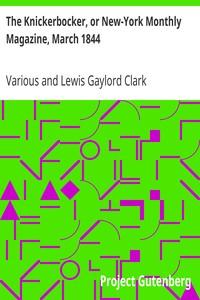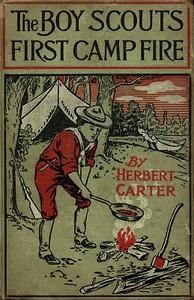|
|
Read this ebook for free! No credit card needed, absolutely nothing to pay.Words: 69611 in 18 pages
This is an ebook sharing website. You can read the uploaded ebooks for free here. No credit cards needed, nothing to pay. If you want to own a digital copy of the ebook, or want to read offline with your favorite ebook-reader, then you can choose to buy and download the ebook.

: The Knickerbocker or New-York Monthly Magazine March 1844 Volume 23 Number 3 by Various Clark Lewis Gaylord Editor - Periodicals The Knickerbocker@FreeBooksTue 06 Jun, 2023 Introduction vii Appendix Polynesian Language Partial List of Hawaiian Terms Used Press Notices Lotus Lilies and Coconuts Frontispiece OPPOSITE PAGE Young Honolulu and Leahi 8 Honolulu Harbor 18 Ulu or Breadfruit Trees 30 Le Passage des Brisants 52 Kapa or Bark Cloth 58 Kukui or Candle-nut Trees 82 Moanalua 94 The Gnarl?d Koa 104 Misty Falls 122 Nuuanu Pali 136 Poi Pounder 144 The Banyan 166 A Wahine 178 A Stone Altar beneath the Lahala Trees 188 Hat and Mat Maker 204 Haliewa and Waianae Mountains 220 Kakuhihewa's Lands 228 Wearing the Lei 244 In Kapiolani Park 252 Rice Fields and Coconut Trees 258 Map of Oahu 278 INTRODUCTION The ancient Hawaiians were not inventive. They did not study new methods of house-building or farming. They did not seek new tools or new weapons. They could live comfortably as their ancestors lived. But they were imaginative and therefore told many a wonderful tale of gods and goblins and men. Some of these stories were centuries old, and were closely akin to legends told in Tahiti, Samoa, Fiji, New Zealand and many other islands of the Pacific Ocean. Most of them were of course limited to the locality from which they came. The Honolulu legends belong to this class almost entirely, although a student of Polynesian mythology will find many traces of connecting links with the mythology of far distant islands. The legends of Old Honolulu have been compiled from stories told by the old Hawaiians. Some of them came from those still living, but many have been found in the files of papers published from 1850 to 1870. The first alphabet for Hawaiians was prepared in 1821. The Hawaiians were taught to read and write their histories and ancient stories as rapidly as possible. This was the result of the labors of the American missionaries. Some of the missionaries, notably Mr. Dibble, sent their pupils out to write down and preserve the old legends and traditions. Between thirty and forty years after the first lesson in the alphabet the Hawaiians were writing articles for papers published regularly in their own language--such as Ka Hae Hawaii , Ke Kuokoa , Ka Hoku Pakipika . These were followed by many papers down to the present time edited solely by Hawaiians. Careful research through these papers brings many stories of the past into the hands of students. It is chiefly in this way that these legends of Old Honolulu have been gathered together. This is the result of several years' work of note-taking and compilation. These legends belong of course to Honolulu people, and will be chiefly interesting to them and those who are acquainted with the city and the island of Oahu. It is hoped that the folk-lore lovers the world over will also enjoy comparing these tales with those of other lands. Sometimes these old stories have been touched up and added to by the Hawaiian story-teller who has had contact with foreign literature, and the reader may trace the influence of modern ideas; but this does not occur frequently. The legend of "Chief Man-eater" comes the nearest to historic times. Cannibalism was not a custom among the ancient Hawaiians. These are unquestionably sporadic cases handed down in legends. Free books android app tbrJar TBR JAR Read Free books online gutenberg More posts by @FreeBooks
: The Boy Scouts' First Camp Fire; or Scouting with the Silver Fox Patrol by Carter Herbert Active - Boy Scouts Juvenile fiction Children's Book Series@FreeBooksTue 06 Jun, 2023
|
Terms of Use Stock Market News! © gutenberg.org.in2025 All Rights reserved.






